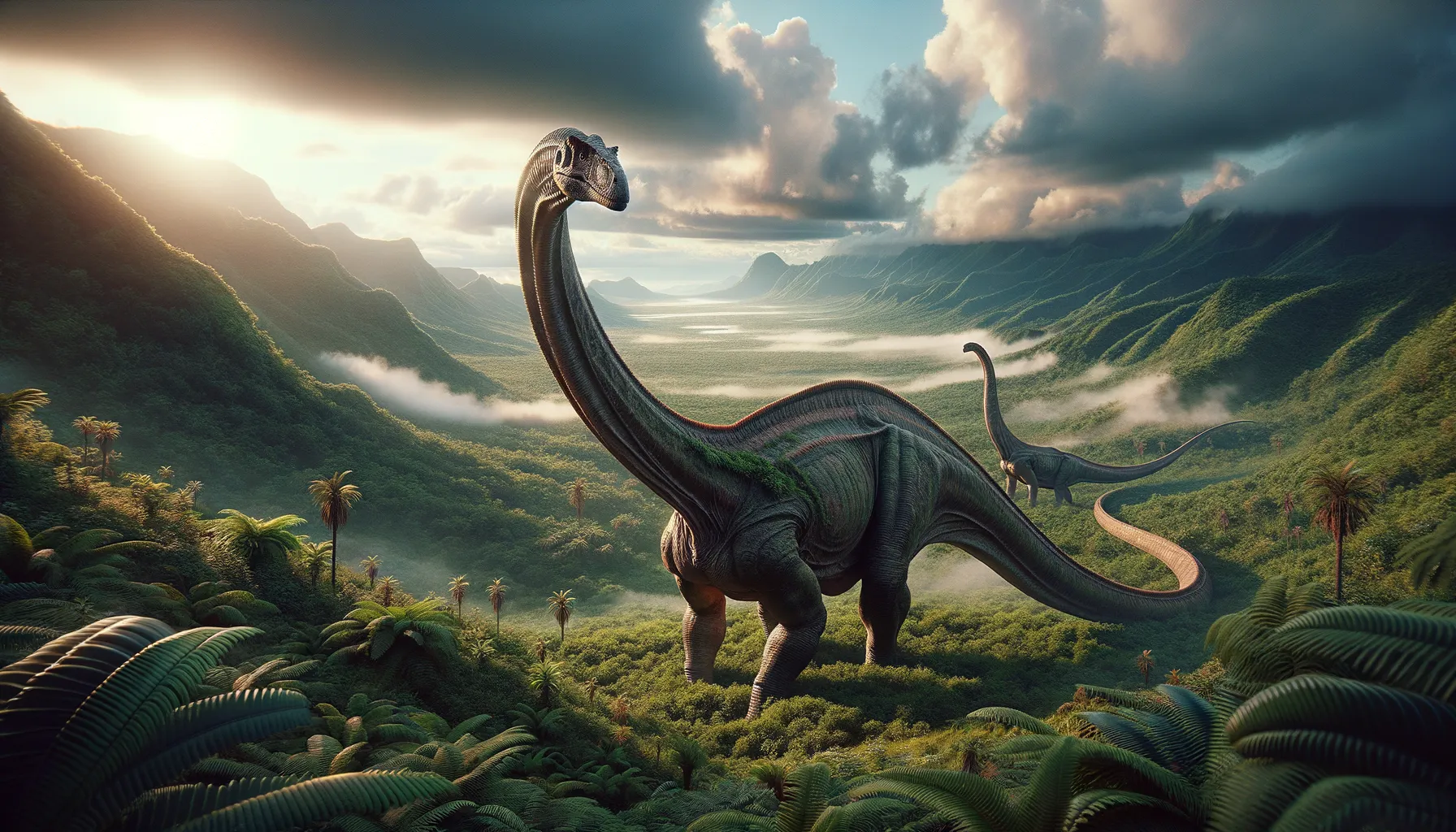
Zizhongosaurus
The gentle giant of the Jurassic age.
Period
Jurassic
Length
Around 15 meters in length.
Height
About 8 meters tall at the shoulder.
Weight
It weighed approximately 20 tons.
Zizhongosaurus was a large, long-necked dinosaur that inhabited what is now China during the Jurassic period. Known for its massive size, it belonged to the sauropod group, featuring a distinctive long tail and neck. This herbivorous dinosaur roamed vast lush landscapes, feeding on a variety of vegetation. Its gentle demeanor and imposing presence made it a crucial part of its ecosystem and a remarkable subject of paleontological study.
Diet
Zizhongosaurus was an herbivore, feeding primarily on plants. Its long neck allowed it to reach high branches and foliage, consuming a variety of shrubs and trees.
Hunting
As a herbivore, Zizhongosaurus did not hunt for food. Its feeding strategy involved foraging for plant-based materials and grazing peacefully in groups.
Environmental challenges
Zizhongosaurus faced environmental challenges such as food scarcity during droughts. These dinosaurs also needed to avoid dangerous swampy areas that could trap their massive bodies. Additionally, they had to navigate shifting climates and ecosystems as the Jurassic period progressed.
Speed
Zizhongosaurus likely moved at a slow pace due to its size.
Lifespan
Estimated to have lived for several decades.
First discovery
First discovered in the Sichuan Province, China, in the late 20th century.
Fun Facts
- Zizhongosaurus was a long-necked dinosaur that lived during the Early Jurassic period, around 190 million years ago.
- This dinosaur belonged to the group known as sauropodomorphs, which are famous for their massive size and long necks.
- Zizhongosaurus fossils were first discovered in the Sichuan Province of China, in a region known for rich dinosaur finds.
- Despite its enormous size, it was a herbivore, meaning it fed on plants, which it likely reached with its long neck.
- It is believed that Zizhongosaurus could grow up to 10 meters (about 33 feet) in length, making it an impressive sight in its time.
- The name 'Zizhongosaurus' comes from the location of Zizhong, where the first fossils were discovered.
- Zizhongosaurus was one of the earlier large sauropod dinosaurs, marking an important step in the evolution of these giant creatures.
Growth and Development
Zizhongosaurus experienced rapid growth during its juvenile stages, reaching a significant size as an adult. This growth required a substantial and consistent food intake to support development. Young Zizhongosaurus would stay close to the herd for protection and learning.
Habitat
Zizhongosaurus inhabited semi-tropical environments with plenty of vegetation. These areas included forests and floodplains, providing ample food and water sources. The variety in landscapes allowed them to migrate and find new feeding grounds as seasons changed.
Interaction with other species
Zizhongosaurus coexisted with various dinosaur species, such as predators and other herbivores. Its size helped deter potential threats from carnivorous dinosaurs. By living in herds, Zizhongosaurus created a mutual defense system against predators.
Natural lifespan
Zizhongosaurus likely lived beyond 50 years in the wild.
Reproduction
Zizhongosaurus reproduced by laying eggs, which were likely buried for warmth and protection. Hatchlings were vulnerable and relied on their growing herds for safety. Parental care was minimal, as young dinosaurs were precocial and quickly learned to feed themselves.
Social behaviour
Zizhongosaurus lived in herds, a social structure that offered protection and facilitated food sharing. Herd dynamics included cooperative movements and vocalizations to communicate threats or food sources. Young members learned social norms by observing adult behavior.
Fossil locations
Fossils of Zizhongosaurus have been primarily found in the Sichuan Basin, China. These localities provide insights into the Jurassic ecosystem. Excavations have revealed bones and partial skeletons, offering crucial data for paleontologists.
